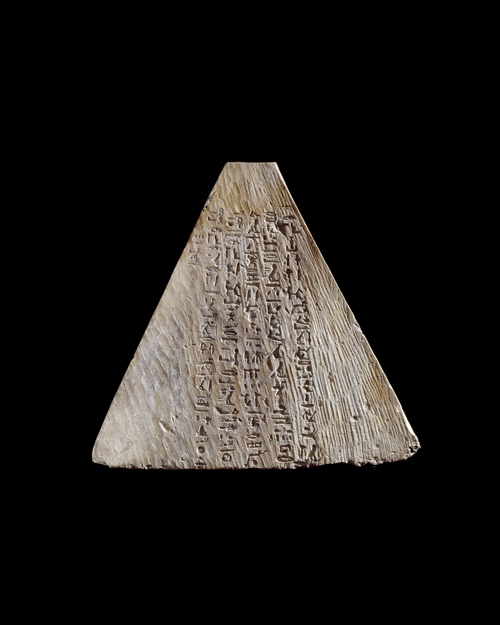
© 2006 Musée du Louvre / Georges Poncet
Uncertain provenance, Abydos (?)
Late period, 26th dynasty, c. 664-525 BC
Limestone.
H.: 35.5 cm; W.: 38.3 cm; D.: 39.4 cm
Department of Egyptian Antiquities, Musée du Louvre
(
D 18 - N 359)
Late-period pyramidions adopted the form and main decorative features of funerary architecture of the New Kingdom. The decorative carving on the four sides of Iher’s pyramidion are divided in a binary way, because opposite sides deal with the same theme: the side with four baboons worshiping a solar disk is thus opposite the side where the deceased and his wife walk forward, arms raised in tribute to the radiant horizon. An adjacent side shows three forms of the sun god—Re, Atum, and Khepri—seated in a boat, while on its opposite side a six-column prayer by Iher is combined with a judgment hymn to god the creator: “May I be found true of voice against my adversaries because I am Atum who made the sky for Re-Horakhty and the earth for Geb, who created what exists and what comes from the earth, who brought forth the light; for [I am] he who brought the gods into the world, the great god who came of himself.” In addition to strict respect for the four cardinal points, what is important here is the joint presence of two key themes: the path of the sun (ubiquitous on this type of monument) and the personal fate of the owner of the object (who, identifying himself with the demiurge, can participate eternally in the cosmic cycle).